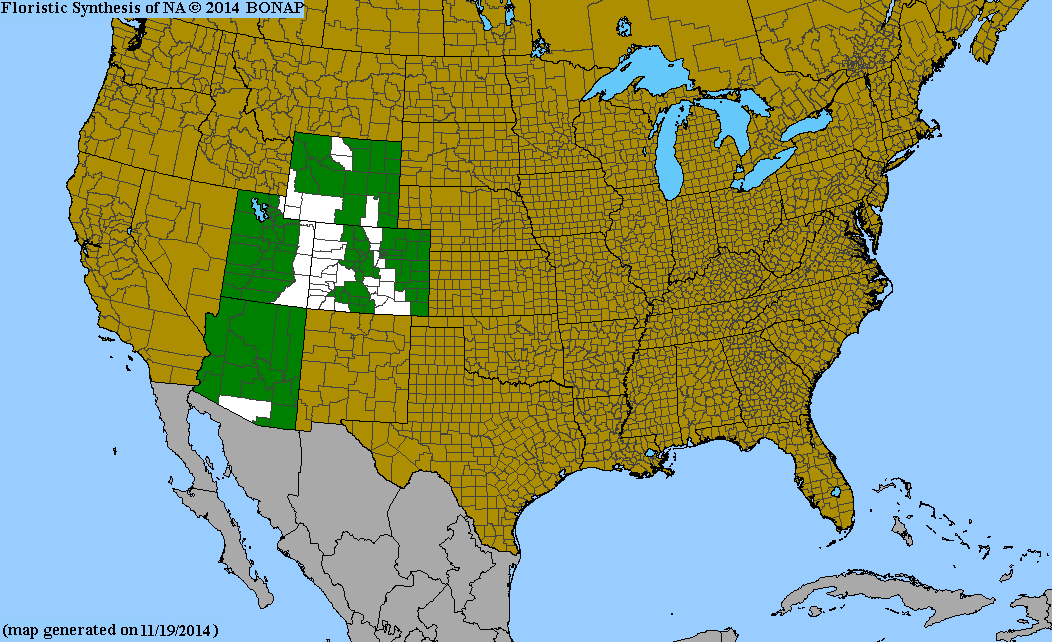(Eyed Gilia)
| Scientific Name | Gilia ophthalmoides | USDA PLANTS Symbol | GIOP |
| Common Name | Eyed Gilia | ITIS Taxonomic Serial No. | 31165 |
| Family | Polemoniaceae (Phlox) | SEINet References |
Click Here |
| Description |
Life zones and habitat: Semi-desert to mesas (4300 to 8500 ft); dry, sandy or rocky soils, open sites, shrublands and woodlands.
Plant: Slender, inconspicuous annual 6 to 12 inches tall with spreading, branching stems with tufts of woolly hairs in lower portion and glandular hairs higher. Leaves: Lower blades in a basal rosette, stem leaves alternate and once or twice pinnately-lobed, up to 2 inches long; lobes usually toothed or lobed, surfaces with dense tufts of woolly hairs. Inflorescence: Small flowers in branch axils, borne on thin, unequal pedicels above each bract; each with 5 white to pink flaring corolla lobes, yellow throat, slightly protruding blue anthers on white filaments and stigma among the anthers; corolla tube 1/4 to less than 1/2-inch long and drying blue; gland-dotted calyx tube less than half as long. Bloom Period: April to July. References: "Flora of Colorado" by Jennifer Ackerfield, SW Colorado Wildflowers, SEINet and American Southwest. Note: The leaves of the plants photographed below were no longer present (mid-July). |
BONAP Distribution Map Map Color Key |
Colorado Status: Native |
© Tom Lebsack 2024
Banner photo: Castilleja rhexifolia and a brewing storm over the San Juan Mountains


